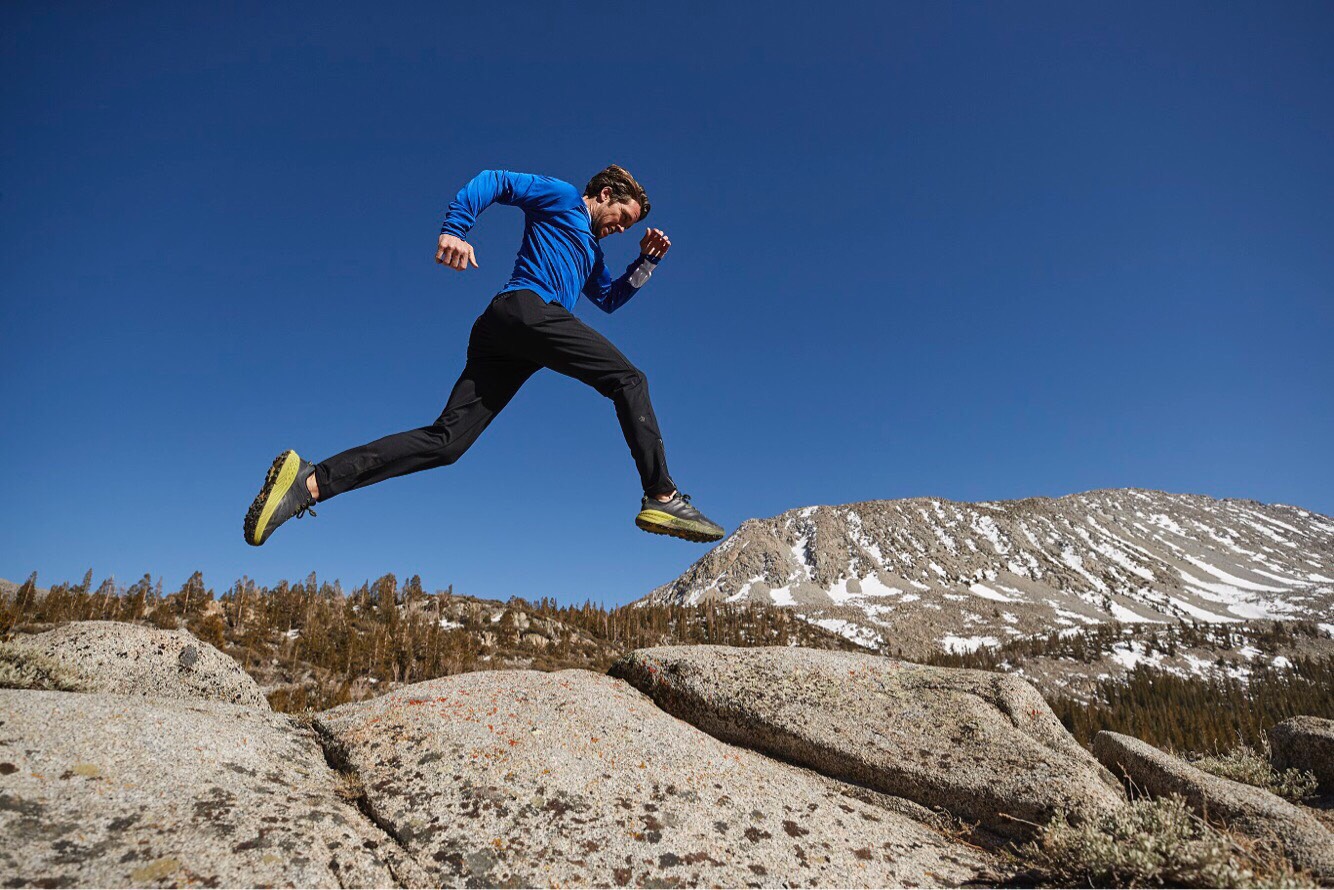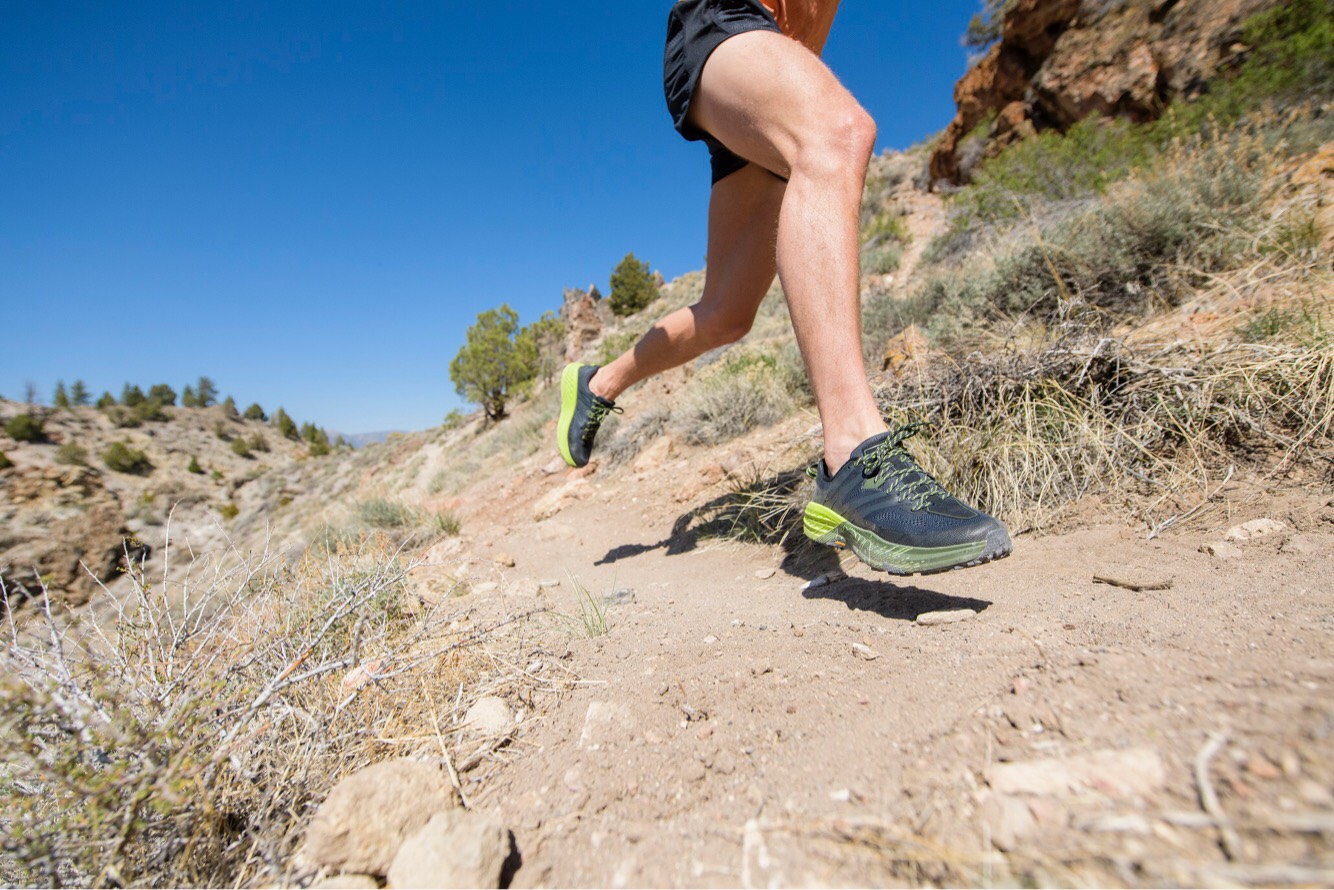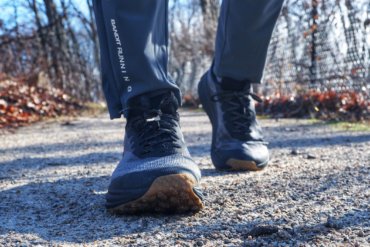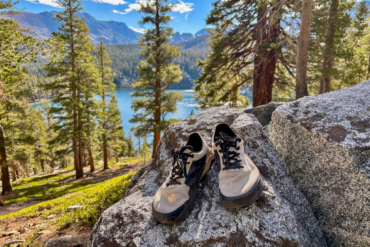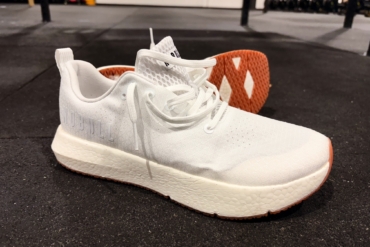Take an early look at the Speedgoat 3, which our reporter tested for three months over 500 miles.
As we rounded the corner, views of the San Francisco sprawled in front of us. Early morning fog shrouded most of the city, with the taller buildings like Sutro Tower rising above the clouds. Endorphins rushed almost halfway through our 10-mile loop in the Marin Headlands.
I looked over at HOKA athlete Magda Boulet, my running partner, and we both started laughing. It was a moment that didn’t require an exchange of words. Flying along these ridgetop trails is as fun as it gets.
The two of us frequently run together in the Oakland hills, Headlands, and farther north, near Mt. Tamalpais. While we both do most of our training alone, our weekly outing is something I always look forward to. We banter about everything — from work to kids, politics, and our big dreams.
Inevitably, we chat about training plans, upcoming races, and the gear we’ve started using recently. I’ve been testing the Speedgoat 3 for a few months now and was excited to hear Magda’s thoughts.
In short: The Speedgoat 3 is a stable and cushioned trail running shoe that hits the market in March 2019. When you lace it up, it feels surprisingly light (10.3 ounces) and fast, with great grip on the bottom. It has a wide midsole and foot box that fits most feet well.
It took me only a handful of runs to break it in. It’s the perfect shoe for runners progressing up the trail running ranks and heading towards ultra distances. Minimalists should probably look elsewhere. This shoe excels on the downhills, providing the support needed for miles upon miles of pounding on challenging terrain.
Speedgoat 3 Improves on Popular HOKA Shoe
Before the Speedgoat 3, Magda and I both wore Speedgoat 2s for months on end. It’s a popular shoe that met the demands of rugged terrain. It has more support than most comparable models, which helps reduce fatigue and protects legs from overuse injuries.
At the same time, the Speedgoat 2 was surprisingly light, making it enjoyable to run uphill and on variable terrain. The bottom traction was good, but not excessive. For those that run dozens of miles each week, a trail shoe that can take a beating is required — and the Speedgoat 2 excelled at that.
The Speedgoat 2 was the epitome of light and responsive. But that wasn’t enough for the design team at HOKA.
Speedgoat 3: Incremental Improvements
HOKA’s secret to innovation is steady, incremental improvements over time.
Like with its predecessor, the first thing I noticed about the Speedgoat 3 was the support-to-weight ratio. The shoe is surprisingly light while providing excellent support and cushioning. This is a delicate balance that very few footwear manufacturers do well.
Speedgoat 3 trail shoes have great traction on wet rock, slick mud, and variable conditions. Over the last three months, I’ve used them on snow in Minnesota, mud in Moab, and rocky alpine trails in Montana — all with ease. The biggest improvements focus on the upper. The 3 has a larger and better-fitting toebox and is considerably more breathable, making it great for wet runs and fringe seasons.
“For the Speedgoat 3, while we set out to improve some ancillary features, like the fit of the toebox and the overall upper composure, we wanted to leave the most important parts of this shoe’s DNA unaltered,” said Gretchen Weimer, vice president of product. “The multidirectional lugs, Vibram Megagrip outsole, protective midsole volume, and deep-cut flex grooves proved hugely popular among runners and hikers who wore this shoe on technical, challenging trails.”
HOKA ONE ONE Speedgoat 3: Review
Compared the full HOKA lineup, the Speedgoat 3 sits somewhere in the middle, striking an even balance between weight and cushion. That said, for most runners, this will be more cushion that you’ve run with in the past. To me, that’s a great thing. This extra support enables beginners and experts alike to run farther and safer, keeping muscles and joints a little more happy on those long days out on the trail.
The shoe is exceptionally soft, which is why it excels on descents. Good traction and lots of support in the heel is the perfect combo for long downhills.
Incorporating feedback from users, testers, and product designers, the Speedgoat 3 foot box is a bit larger than that of its predecessor, which I find more comfortable with my extremely boney feet.
I wear a size 10 and have an average heel width. The shoe fits me incredibly well, both in the forefoot and heels, and took only a few runs to break in. The Speedgoat 3’s traction is good, but maybe not ideal for super-slick runs or very rough terrain. For standard trails or a bit of scrambling, it’s more than sufficient. The outer is water-resistant, making it great for rainy days.
Speedgoat 3 Specs & Features
- Men’s geometry: Offset 4mm; heel 32mm; forefoot 28mm
- Women’s geometry: Offset 4mm; heel 30mm; forefoot 26mm
- Weight: Men’s 10.3 oz (292 g); women’s 9.1oz (258 g)
- Sizes: Men’s 7-15, women’s 5-11
- Open mesh construction to maximize breathability and support
- Reinforced TPU midfoot overlays to ensure a secure fit
- Midfoot cage designed for stability and foot capture
- Oversize EVA midsole provides lightweight cushioning
- Wider platform designed to provide a more stable base
- CMEVA foam midsole absorbs impact points
- Vibram Megagrip high-traction outsole with 5mm lugs
- Multidirectional lugs for better grip on varied terrain
- Durable outsole design
- See Men’s Speedgoat 3
- See Women’s Speedgoat 3
HOKA ONE ONE: A Legacy of R&D
HOKA’s testing philosophy is an artifact of the founders’ background in mountain biking and alpine skiing.
“This shoe combines elements from many others, including increased midsole volume, the Meta-Rocker technology, and an active foot frame for inherent stability,” Weimer said.
The shoe borrows upper technology from tennis shoes, including Matryx.
“Matryx has Kevlar woven in to provide a super-light, super-strong upper material that protects against the lateral torsion inherent in tennis, and our team figured it could make a good upper in a high-performance trail shoe,” Weimer said. “As an added bonus, it doesn’t hold any water. The result is that we have been producing incredibly lightweight trail shoes that can withstand the demands of a 100-mile race in the mountains.”
The Driving Force Is Culture
Behind all the discussion around midsoles, lugs, and foot boxes is a unique culture that encourages open communication and wild ideas. With a relatively small team — just a few dozen at its headquarters — HOKA is able to create the feeling of family and encourage interaction across teams.
“If anyone has an idea, they can raise their hand in a meeting, or walk into my office and share it; I think everyone here appreciates that they are able to contribute at every level,” said Weimer. “It feels like a family, creating some of the best shoes on the market.”
The Result: My Favorite Trail Shoe
I wore my first pair of Speedgoat 2s for over 1,000 miles and then bought a second pair, which I used for at least that long. I loved the fit, the traction, and, mostly, the support. With chronic hamstring issues, I’m always focused on injury prevention, and the Speedgoat 2 certainly played a part in that.
The new Speedgoat 3 retains everything I loved — the lightweight feel, stable base, great traction — while making the shoe lighter and quick-drying, with a more durable outsole. Once again, HOKA has set the bar high for the quality of trail shoes, as it’s refined every detail.
For those looking for a cushioned shoe that makes you feel like you’re flying, I’d highly recommend the Speedgoat 3.
Shop HOKA ONE ONE Speedgoat 3:
[gj_product_grid group=”5c9d8bd09d616″]

